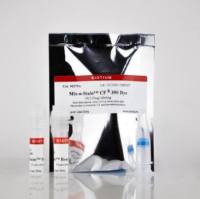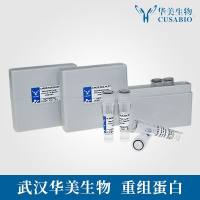Measurement of Cation Movement in Primary Cultures Using Fluorescent Dyes
互联网
- Abstract
- Table of Contents
- Materials
- Figures
- Literature Cited
Abstract
Ca2+ , Na+ , K+ , and Mg2+ have a central role in neuronal excitability. The concentration of these cations in the cytoplasm of neurons (generically termed [ion+ ]i) provides a marker of the excitation state of the neurons, and may also illuminate the activity of specific signaling mechanisms that involve Ca2+ ? or Mg2+ ?activated enzymes. The measurement of [ion+ ]i in cultured neurons is achieved with the use of an ion?sensitive fluorescent dye in combination with equipment designed to quantitatively measure fluorescence. Specificity is obtained by choosing dyes with the appropriate selectivity for the ion of interest. Measurements of steady state ion concentrations can be made, as well as measurements of the net difference between ion movement into the cytoplasm (in response to a stimulus) and the physiological buffering of that ion. The procedures in this unit for loading and recording from dyes are broadly similar for each ion when ratiometric dyes are used as described, and can readily be modified for use with single?wavelength dyes. Support protocols are provided for calibration of individual dyes, which can be more problematic.
Table of Contents
- Strategic Planning
- Basic Protocol 1: Measurement of [ion+]i Using Ratiometric Dyes
- Calibration for Ratiometric Dyes
- Support Protocol 1: Cell‐Free Calibration of Ca2+ Dyes
- Support Protocol 2: In Situ Calibration of Ca2+Dyes
- Support Protocol 3: In Situ Calibration of Na+ Dyes
- Support Protocol 4: Cell‐Free Calibration of Mg2+ Dyes
- Alternate Protocol 1: Calibration and Measurement Using Nonratiometric [Ca2+]i Dyes
- Reagents and Solutions
- Commentary
- Literature Cited
- Figures
- Tables
Materials
Basic Protocol 1: Measurement of [ion+]i Using Ratiometric Dyes
Materials
Support Protocol 1: Cell‐Free Calibration of Ca2+ Dyes
Materials
Support Protocol 2: In Situ Calibration of Ca2+Dyes
Materials
Support Protocol 3: In Situ Calibration of Na+ Dyes
Materials
Support Protocol 4: Cell‐Free Calibration of Mg2+ Dyes
|
Figures
-

Figure 7.11.1 Schematic of a fluorescence recording system. The function of the system components are described in the text (see Strategic Planning). The computer controls the wavelength selector in equipment used for monitoring dual‐excitation dyes, and is critical for data acquisition from the detector in all recording systems. The diaphragm is not usually necessary in CCD camera–based imaging systems. View Image -

Figure 7.11.2 Typical results using a dual‐emission [Ca2+ ]i indicator, Indo‐1. Recordings were made from a single cultured forebrain neuron (e.g., White and Reynolds, ). (A ) Typical raw fluorescence values after background subtraction (bottom two traces) and the resulting ratios (top trace). The increases in the 405/490 ratio were provoked by two 15‐sec applications of 3 µM glutamate/1 µM glycine, repeated 15 min apart. Note that the actual value of the ratio depends on the output of each detector. As detector sensitivity can be independently varied, the ratios can be adjusted over a relatively wide range of values. However, it is critical that detector sensitivity be kept constant following calibration in order to generate meaningful values for [Ca2+ ]i . (B ) Data from (A) were converted to [Ca2+ ]i using the calibration parameters K = 1009, R min = 0.792, and R max = 6.356. Note that the relationship between ratios and [Ca2+ ]i is nonlinear, such that a given ratio change represents a larger [Ca2+ ]i change at higher ratios than at lower ratios. This has the effect of emphasizing the peaks in the data and underemphasizing changes in [Ca2+ ]i near baseline values. View Image
Videos
Literature Cited
| Blinks, J.R. 1992. Intracellular [Ca2+] measurements. In The Heart and Cardiovascular System (H.A. Fozzard, ed.) pp. 1171‐1201. Raven Press, New York. | |
| Grynkiewicz, G., Poenie, M., and Tsien, R.Y. 1985. A new generation of Ca2+ indicators with greatly improved fluorescence properties. J. Biol. Chem. 260: 3440‐3450. | |
| Harootunian, A.T., Kao, J.P.Y., Eckert, B.K., and Tsien, R.Y. 1989. Fluorescence ratio imaging of cytosolic free Na+ in individual fibroblasts and lymphocytes. J. Biol. Chem. 264: 19458‐19467. | |
| Haugland, R.P. 1993. Intracellular ion indicators. In Fluorescent and Luminescent Probes for Biological Activity (W.T. Mason, ed.) pp. 34‐43. Academic Press, London. | |
| Iatridou, H., Foukaraki, E., Kuhn, M.A., Marcus, E.M., Haugland, R.P., and Katerinopoulos, H.E. 1994. The development of a new family of intracellular calcium probes. Cell Calcium. 15: 190‐198. | |
| Ishijima, S., Sonoda, T., and Tatibana, M. 1991. Mitogen‐induced early increase in cytosolic free Mg2+ concentration in single Swiss 3T3 fibroblasts. Am. J. Physiol. 261: C1074‐C1080. | |
| London, R.E. 1991. Methods for measurement of intracellular magnesium: NMR and fluorescence. Annu. Rev. Physiol. 53: 241‐258. | |
| Minta, A., Kao, J.P.Y., and Tsien, R.Y. 1989. Fluorescent indicators for cytosolic calcium based on rhodamine and fluorescein chromophores. J. Biol. Chem. 264: 18171‐18178. | |
| Murphy, E. 1993. Measurement of intracellular ionized magnesium. Miner. Electrolyte Metab. 19: 250‐258. | |
| Neher, E. 1995. The use of fura‐2 for estimating Ca buffers and Ca fluxes. Neuropharmacology 34: 1423‐1442. | |
| Poenie, M. 1990. Alteration of intracellular fura‐2 fluorescence by viscosity: A simple correction. Cell Calcium 11: 85‐91. | |
| Rizzuto, R., Simpson, A.W.M., Brini, M., and Pozzan, T. 1992. Rapid changes of mitochondrial Ca2+ revealed by specifically targeted recombinant aequorin. Nature 358: 325‐327. | |
| Stout, A.K., Li‐Smerin, Y., Johnson, J.W., and Reynolds, I.J. 1996. Mechanisms of glutamate‐stimulated Mg2+ and subsequent Mg2+ efflux in rat forebrain neurones in culture. J. Physiol. 492: 641‐657. | |
| White, R.J. and Reynolds, I.J. 1995. Mitochondria and Na+/Ca2+ exchange buffer glutamate‐induced calcium loads in cultured cortical neurons. J. Neurosci. 15: 1318‐1328. | |
| Zhao, M., Hollingworth, S., and Baylor, S.M. 1996. Properties of tri‐ and tetracarboxylate Ca2+ indicators in frog skeletal muscle fibers. Biophys. J. 70: 896‐916. | |
| Key Reference | |
| Mason, W.T. 1993. Fluorescent and Luminescent Probes for Biological Activity. Academic Press, London. | |
| This is an excellent book that covers all aspects of the principles and practice of fluorescence microscopy. It also discusses cation‐sensitive dyes and numerous other subjects. |





